
Vienna, the capital of Austria, is one of the most visited cities in Europe. It is known for its museums, palaces, cafes, history and culture. Identified as the city of music and dreams, Vienna is the ideal destination for an enjoyable city break. Three days is an absolute time to spend in this most liveable city in the world. In this post, I am going to share my idea of the perfect 3 day Vienna itinerary , embracing all the major highlights and attractions.
Table of Contents
3 DAY VIENNA ITINERARY – THE BEST THINGS TO DO IN VIENNA IN 3 DAYS
Save this on Pinterest to read it later
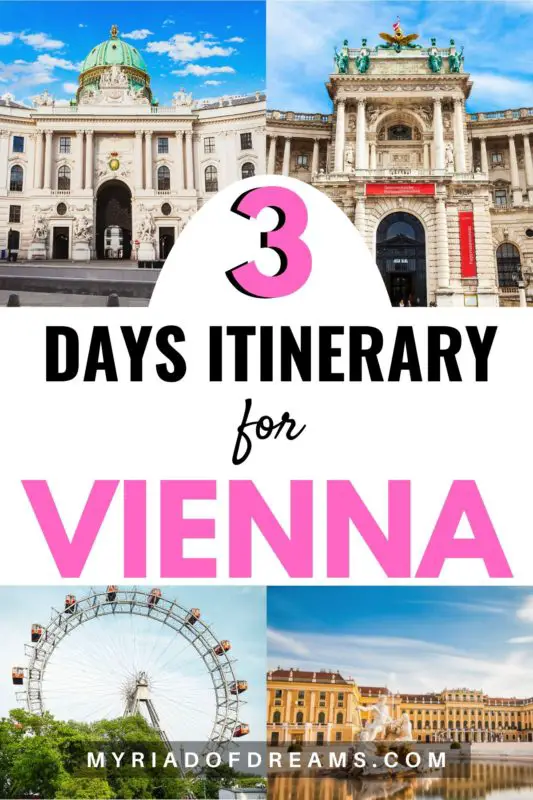
Disclosure: This post contains affiliate links. If you click one of them, I may receive a small commission at no extra cost to you.
GETTING AROUND IN VIENNA
Vienna has a wondrous public transport system, and all the major tourist attractions are well connected. At times I even walked from one destination to another, as they were so close.
The best way to travel in Vienna is unquestionably by trams, buses and U Bahn.
Buy a Vienna Card for 24/ 48/ 72 hours at 17€/ 25€/ 29€ respectively. With this card, you can travel free by tram, bus and underground (U Bahn). You also get discounts at more than 210 museums, attractions and restaurants.
DAY 1 IN VIENNA
SCHLOSS SCHÖNBRUN
THE PALACE
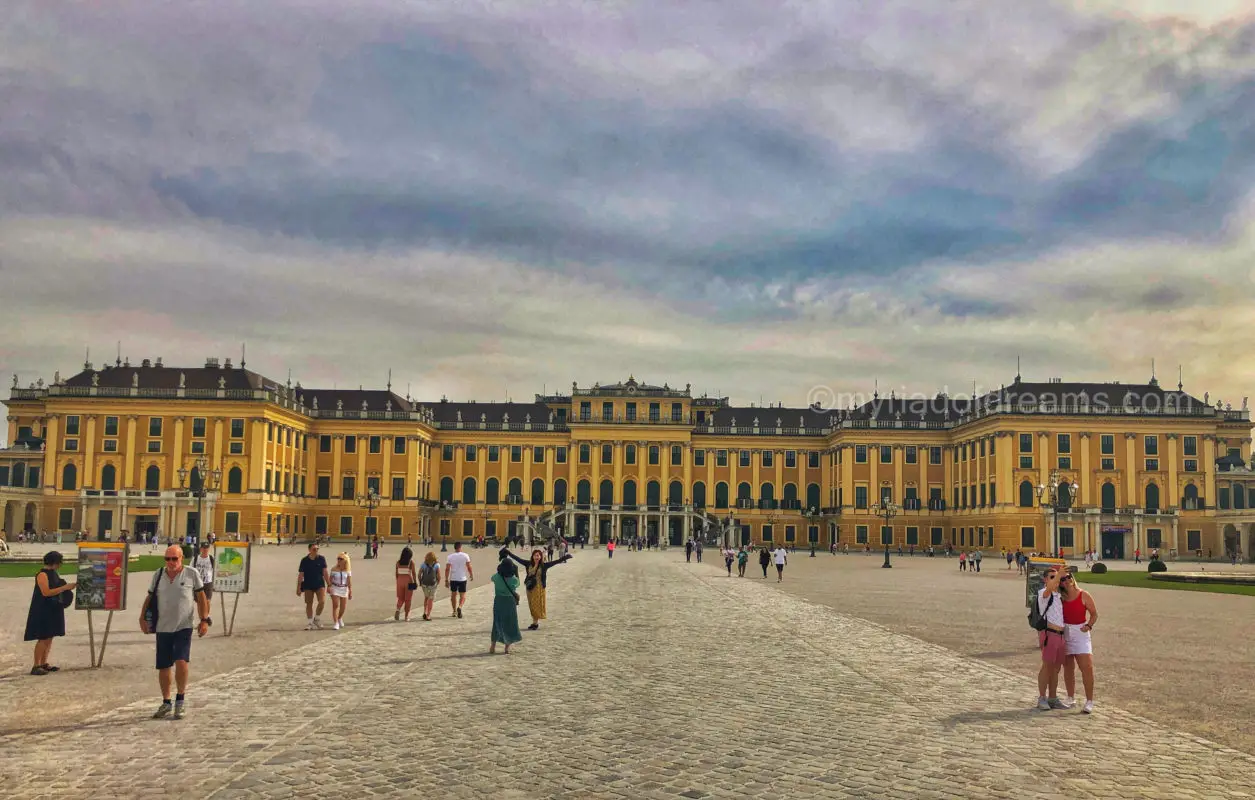
Schönbrunn Palace is my most favourite place in Vienna. You will find this beautiful palace in every Vienna itinerary.
If you are history buff or a nature lover, Schönbrunn has something for you. You can take the Imperial or The Grand Tour to get a glimpse into the lifestyle of the Imperial monarchs. The Palace has a total of 1441 rooms filled with grandeur and luxury. Pre-book your tickets here to avoid long queues.
PRIVY GARDENS
Privy Gardens, also known as Crown Prince Rudolf Gardens were the private gardens of the Imperial family. A separate ticket is required to visit the Privy Gardens.
PARK AND THE GARDENS
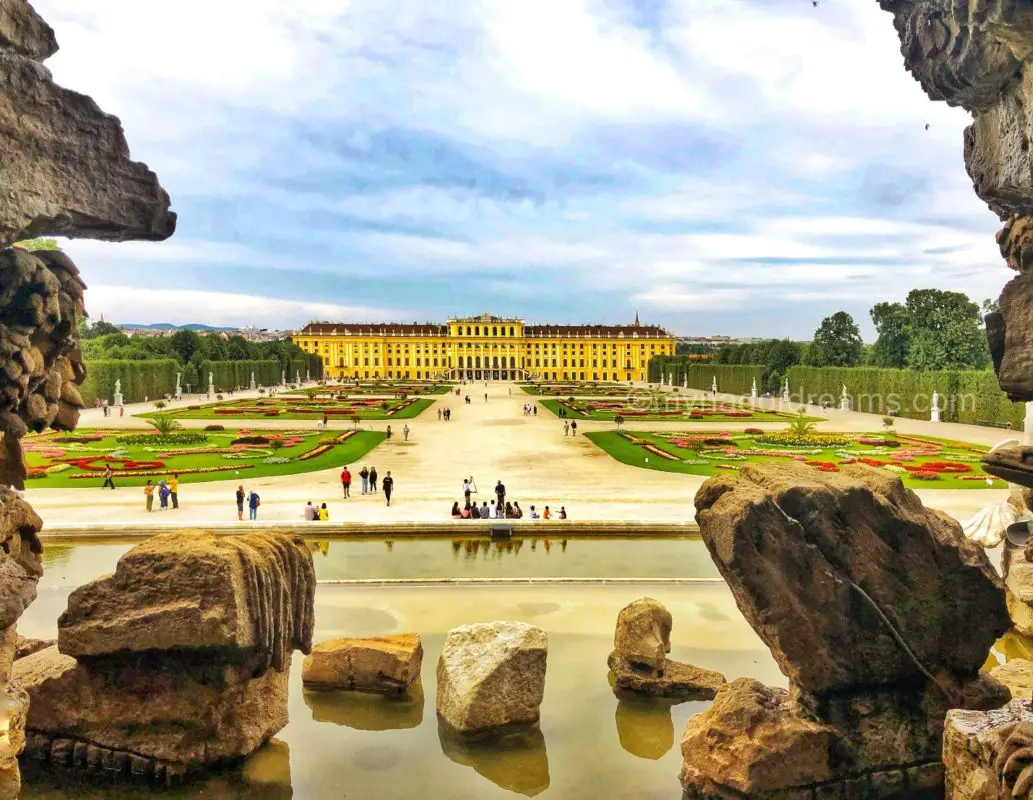
As the admission to the park and the garden of the palace is free, therefore you will find many locals jogging and relishing the beauty of the lovely gardens. As the palace compound is enormous, many first time visitors are unable to find their way to the gardens. Follow the signs to reach the gardens and trust me you won’t regret it.
ORANGERY
Schönbrunn has the second-largest Orangery in Europe. Here you can witness rare and exotic plants like bitter oranges and myrtles. A separate ticket is needed to visit the Orangery.
MAZE AND LABYRINTH
The first maze was built in 1720, but it disappeared with time. In 1999 a new maze was reestablished. If you have kids, this will be their history escape route. The maze is very simple, and you can easily make your way out. There is an elevated viewing platform at the centre of the maze, from where you can watch your friends and family, trying to make it to the centre.
GLORIETTE
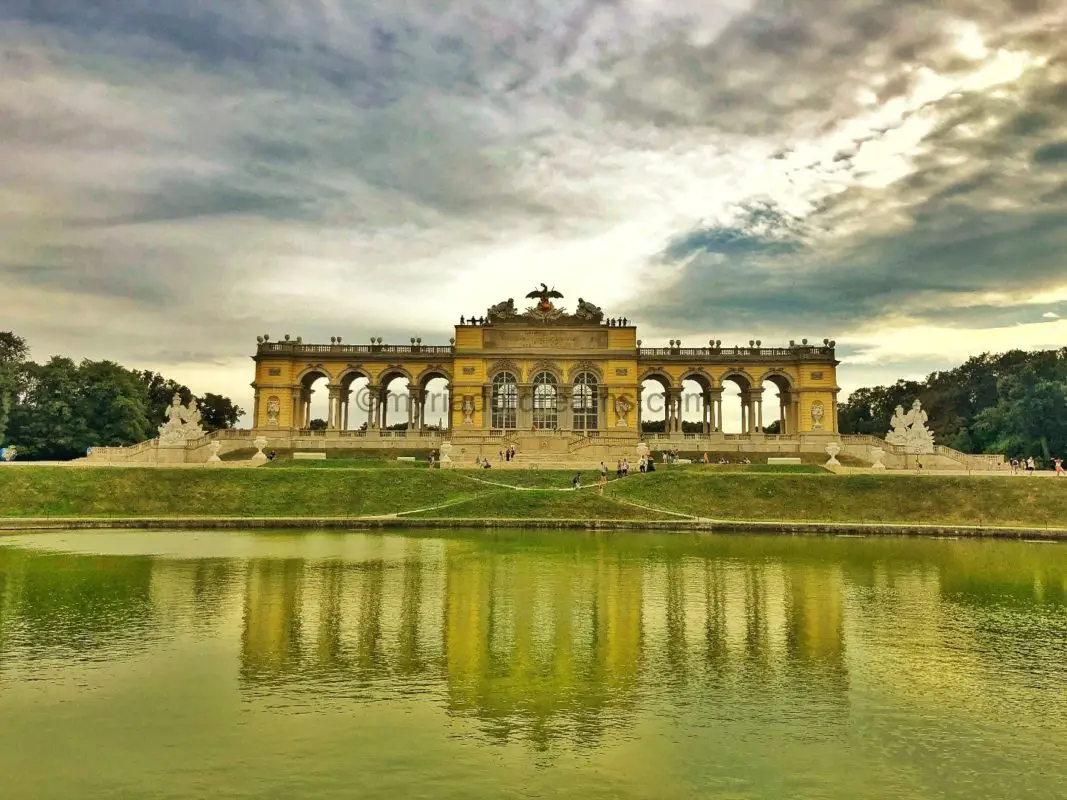
From the gardens, you can see the largest and the most famous Gloriette on top of the hill. It was built in 1775 under the guidance of architect Johann Ferdinand. It is said that the Gloriette was constructed because the royals did not like the sight of a plain hill from the Palace.
You can buy tickets from the Gloriette to reach the terrace. It also houses a café.
How to reach Schönbrunn: You can use the U-Bahn(U4), Bus(10A) or the Tram(10 and 60).
STADT PARK
Stadt Park is the German name for City Park. It was designed in 1861 by Rudolf Siebeck (the first municipal Gardner of Vienna). Today the Stadt Park is the largest municipal park in the city.
Vienna River passes through the park, dividing it into two parts. Take a stroll in the park and enjoy some beautiful landscapes before heading to your next destination.
Although the entire Stadt park gives you enough photogenic locations, the most photographed spot is the gold plated bronze statue of the Austrian composer Johann Strauss II.
How to reach Stadt Park: Take U4 from Schönbrunn underground train station and get down at Stadt Park station.
HUNDERTWASSER HOUSE

Hundertwasser house is a residential building which seems to have come straight out of a fairy tale. The colourful façade and unsymmetrical style of architecture make this house a must-visit during any Vienna trip.
This house was constructed by an artist named Hundertwasser, who did not believe in traditional architectural styles. He came up with an idea of a unique colourful building with hanging trees and shrubs from the windows.
As this is a residential complex, you cannot visit the apartment from the inside.
How to reach Hundertwasser House: Take U4 from Stadt Park station and get down at the next station Landstraße Wien Mitte, the destination is 10 minute walking distance away.
PRATER
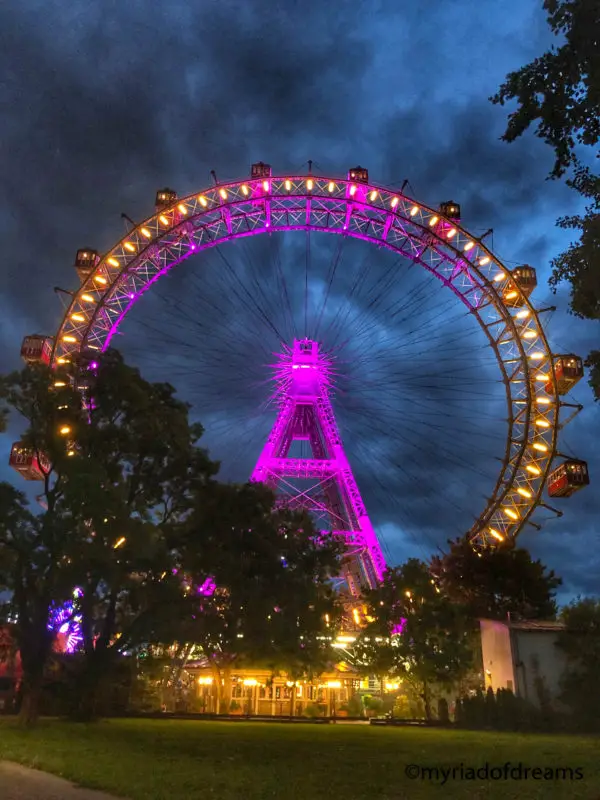
Prater is a massive amusement park in Vienna. Unlike many other amusements park in the world, entry to Prater is free.
There are more than 250 attractions to choose from and do not forget the famous Giant Ferris Wheel. It was built in 1897, and since then it has served as a Viennese landmark. Apart from a usual ride, it also offers two rentable luxurious Gondolas.
Prater is also a great location to have dinner as it has more than 60 Cafes and Restaurants. Some of the famous Restaurants and Cafes in Prater are Schweizerhaus, Meierei and Rollercoaster to name a few.
How to reach Prater: From station Landstraße Wien Mitte take U4 and at the next station Schwecenplatz, change to U1. Board U1 going to Leopoldau, and get down at Praterstern Station.
DAY 2 IN VIENNA
BELVEDERE PALACE
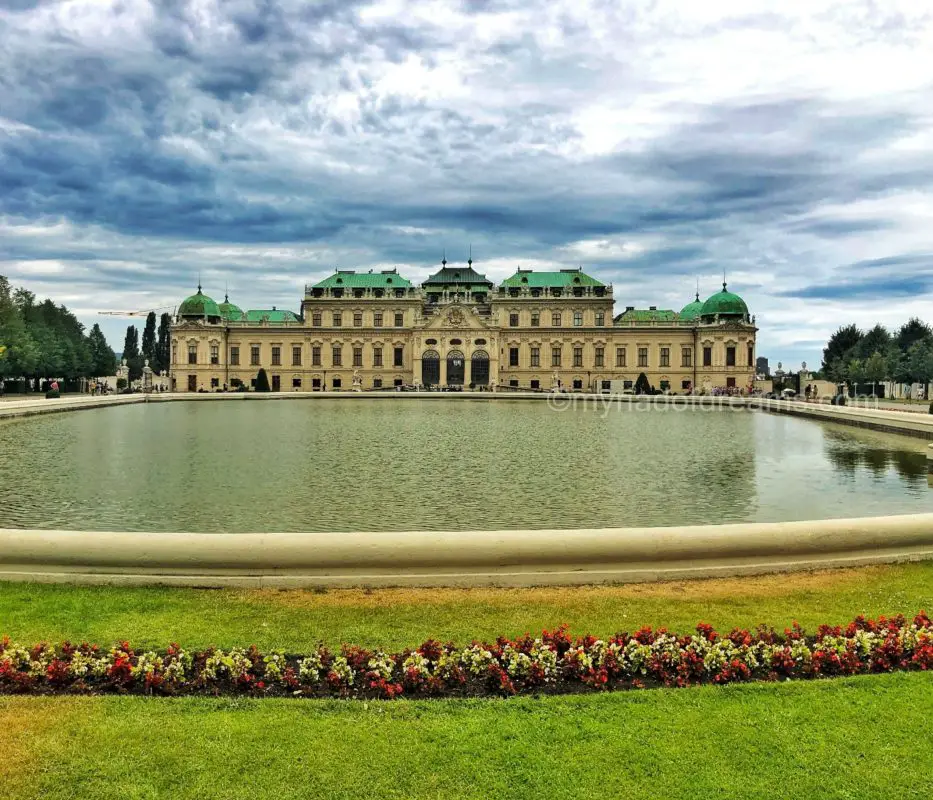
Start your day by visiting a UNESCO World Heritage Site in Vienna – The Belvedere.
Belvedere consists of two palaces (Upper Belvedere and Lower Belvedere) and their extensive gardens. It was built in 18th century by the Austrian General Prince Eugene of Savoy as a summer residence.
Today the baroque styled palaces serve as museums. A separate ticket is needed to visit each palace and thus can get a little expensive. I chose to visit the Upper Belvedere, as it exhibits some of the best works by Gustav Klimt, including the much-celebrated “The Kiss”.
The Gardens are free to enter and thus can be enjoyed without burning a hole in the pocket.
How to reach Belvedere: Take tram D and get down at Schloss Belvedere stop or take tram 71 and get down at Unteres Belvedere stop.
KARLSKIRCHE
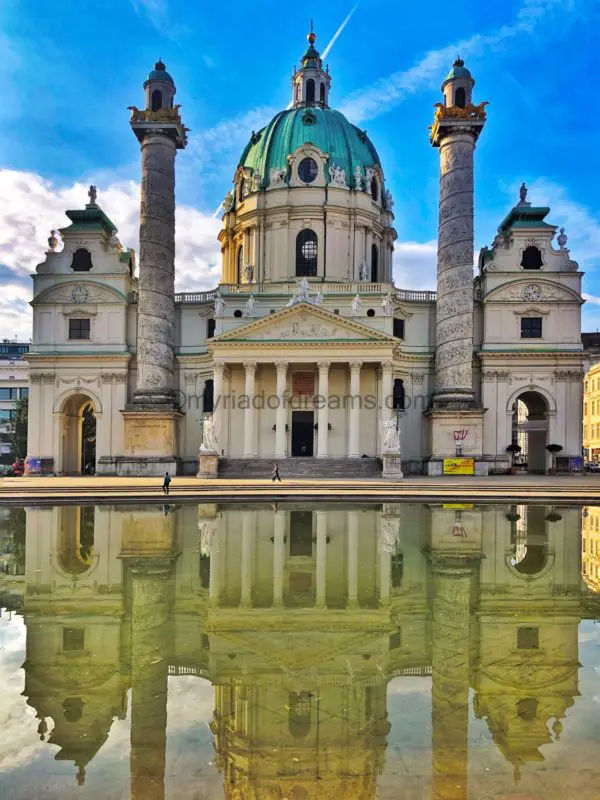
Karlskirche known as St. Charles Church in English, is an underrated and beautiful baroque church in Vienna.
You won’t find many tourists in and around the church, which is quite surprising. But the absence of the crowd adds to its beauty.
The church is not only admirable from the outside but also the inside. For a few bucks, you can take a Panoramic lift, which allows you to appreciate the impressive frescos on the dome of a church from pretty close.
How to reach Karlskirche: Take tram D from Schloss Belvedere stop and get down at Gusshausstrasse. Walk your way to the church.
VIENNA STATE OPERA
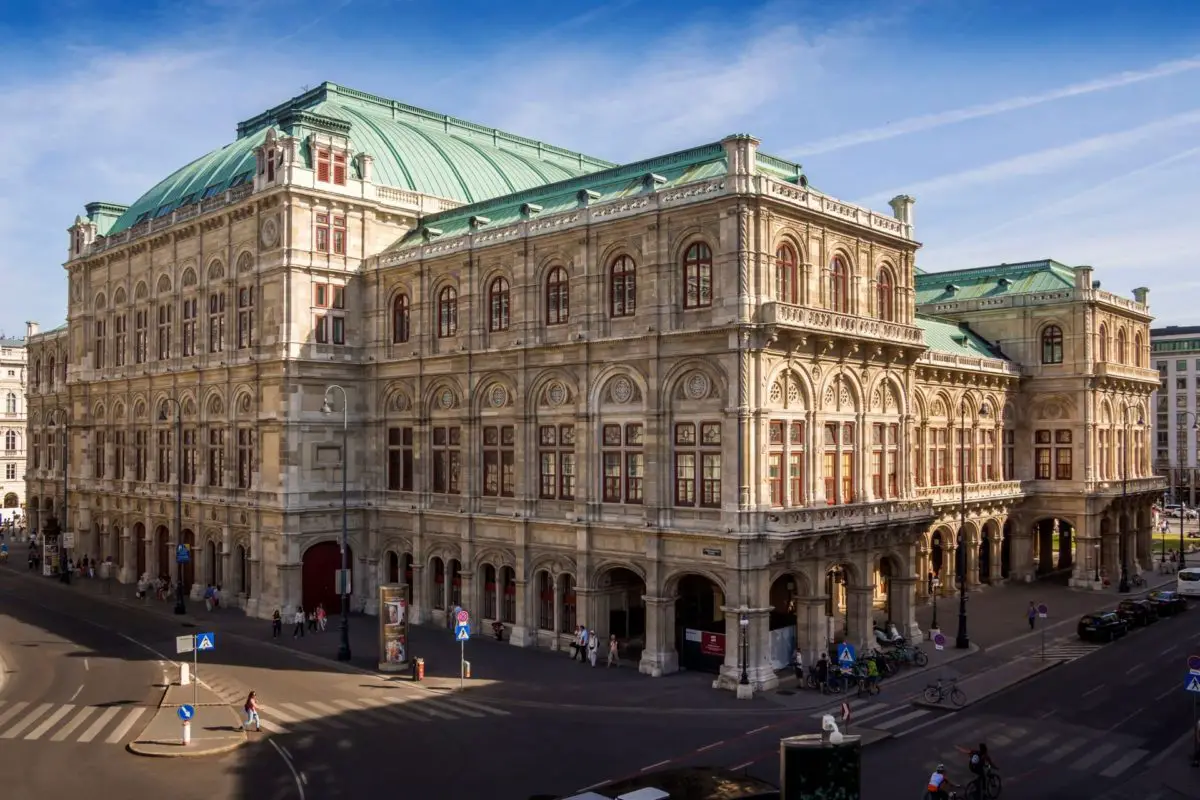
The famous Vienna State Opera is one of the busiest operas in the world. Its architecture and aura make everyone stop by and admire its beauty for a while.
Always pre-book your tickets for the Opera performances as they sell quite fast. But you can always buy standing room tickets at the last moment. The best part about these tickets is that they won’t burn a hole in your pocket. These tickets start to sell 80 minutes before curtain time.
If you are one of those, who are not interested in watching a performance or the one who doesn’t have much time in hand, then take a guided tour, which gives you a glimpse of the history, architecture and all behind the scene details.
How to reach State Opera: Talk a walk from Karlskirche to the State Opera. It will take approximately 10 minutes to reach the State Opera via the Opernpassage.
ST. STEPHEN’S CATHEDRAL

St. Stephen’s Cathedral is an iconic religious building of Vienna. It is extremely famous amongst the tourists as well as the locals, and therefore it would be wise to expect a large number of people.
The Cathedral has four towers, out of which the south tower is the tallest. There is a tower room at the top, from where a stunning view of the city can be enjoyed. But unfortunately, the only way to reach the top of the tower is by climbing 343 steps.
The north tower is the 2nd tallest tower of the cathedral. It is said that the devil has his hand in the tower and therefore the construction of this tower was never finished. Unlike the South Tower, a lift takes you to the plateau of the North Tower, from where a gorgeous view of the city can be enjoyed. The largest bell in Austria called “Pummerin” is also located in the North Tower.
How to reach St. Stephen’s Cathedral : Talk a walk from the State Opera to St. Stephen’s Cathedral. It will take approximately 10 minutes to reach St. Stephen’s Cathedral via Kärntner Street.
ST. PETER’S CHURCH
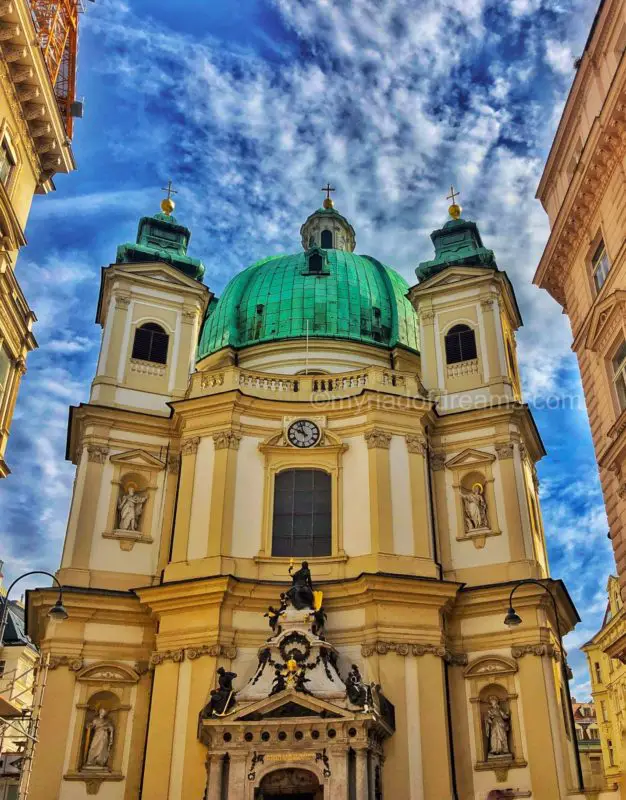
St. Peter’s Church is a gorgeous Baroque church in a narrow street of Vienna squeezed between buildings.
This masterpiece was not on my bucket list, and I happened to visit it by chance because I lost my way. It looks small when compared to other churches and cathedrals but, it’s interior and architecture makes it an awe-inspiring masterpiece.
How to reach St. Peter’s Church: It is a 2 minute walk from St. Stephan’s Cathedral.
GRABEN
Graben is a famous and vibrant shopping street in the heart of Vienna. The origin of this street dates back to the Roman Era when a trench was filled to expand the city. Hence the street was named Graben (which translates to trench or a ditch).
Today this street is not only a shopper’s paradise but is also a treat to the eyes. Exquisite architectural masterpieces line the street.
Plague Column, a baroque memorial which was erected after the Great Plague epidemic hit the city, is placed at the centre of the street. It is one of the most significant sculptures in the city.
Here you can find traditional shops, coffee houses, restaurants, bakeries, souvenir shops and much more. The famous Kohlmarkt and Kärntner Straße are also adjacent to the street.
How to reach Graben: Walk your way from St. Peter’s Church to Graben. It is only few meters away.
DAY 3 IN VIENNA
HOFBURG
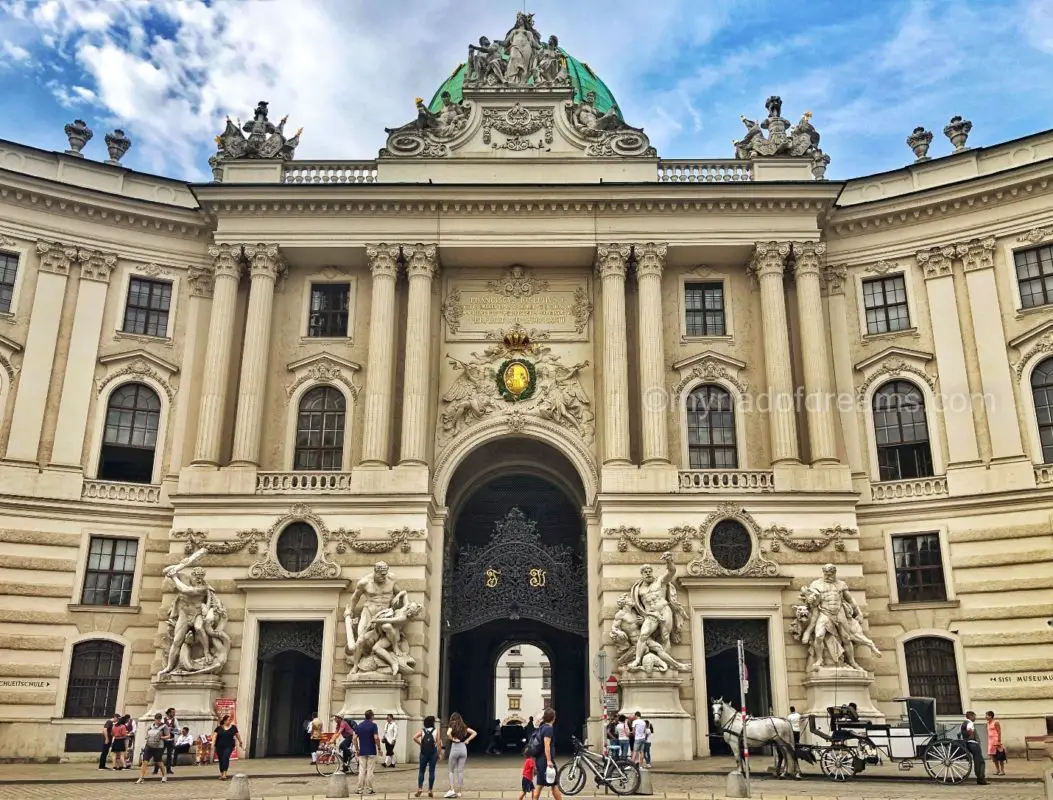
Hofburg is a colossal imperial palace in Vienna. Until 1918,the emperors of the Habsburg destiny used the Palace. Today, it serves as the residence of the Austrian President and is also home to several museums.
The main attractions in the Hofburg complex are the Sisi Museum, Imperial Apartments and the Silver collection.
The Imperial Apartments were the residential as well as the official chambers of the Emperor and Empress of the Habsburg dynasty, whereas the Sisi Museum is dedicated to shedding light on the life and lifestyle of Empress Elizabeth. The Silver Collection, as the name suggests introduces one to the imperial dining traditions.
All the above attractions can be visited with a single ticket.
Other places to visit in Hofburg are The Spanish Riding School, Imperial Library and the Treasury.
How to reach Hofburg : Take U Bahn U3 and get down at Herrengasse
Trams: 1, 2, D and 71, get down at Burgring
Bus: 1A and 2A, get down at Hofburg
VOLKSGARTEN AND THESEUS TEMPLE
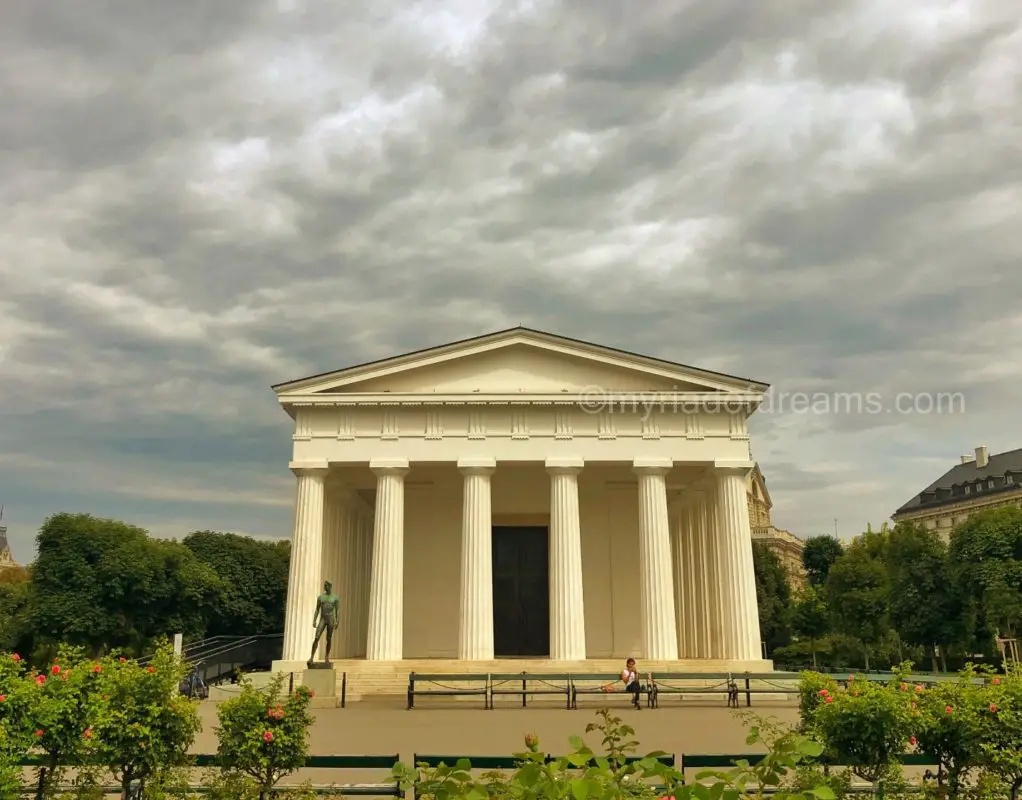
Volksgarten, a beautiful public garden within Hofburg, is a perfect place to relax and appreciate the scenery. At the centre of the park, you can find a magnificent white structure known as “The Temple of Theseus”. It is a small-scale replica of the Temple of Hephaestus in Athens.
Pietro Nobile, built the temple on the orders of Emperor Franz I. Originally it was built to house Antonio Canova’s famous Theseus sculpture, but it was later relocated to the Art History Museum. Today it is used for temporary exhibitions.
The Volksgarten and the Theseus Temple makes a striking photo scene.
BURGTOR

Burgtor is a Triumphal Arch located in Heldenplatz. Heldenplatz, which translates to Heroes Square, is named after two Austrian war heroes – Prince Eugène of Savoy and Archduke Charles.
The Burgtor commemorates the Battle of Leipzig in 1813, where Austria and its allies defeated Napoleon with his outnumbered troops. Peter von Nobile, designed the Arch, as a new gate for Hofburg.
How to reach Burgtor: It is at walkable distance from Hofburg
MARIA THERESIEN PLATZ
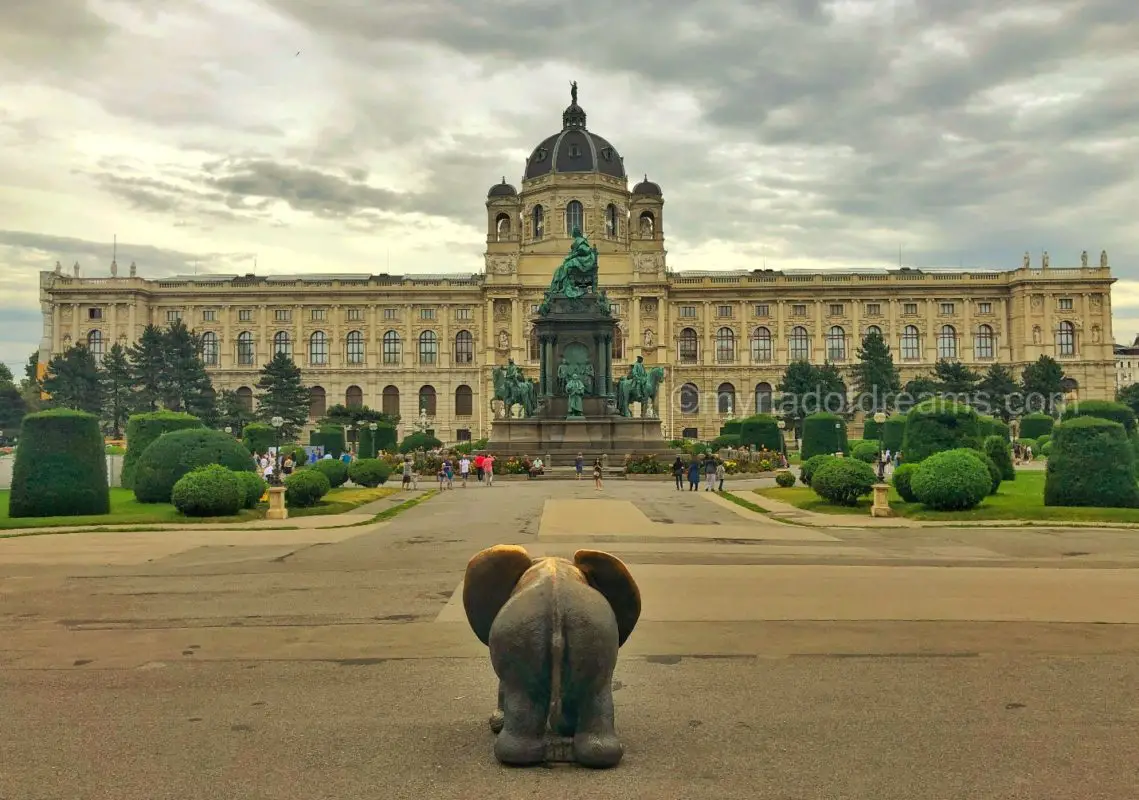
Maria Theresien Platz is a large public square in Vienna, between the Naturhistorisches Museum(Natural History Museum) and the Kunsthistorisches Museum (Art History Museum).
The two museums mirror each other, except for the statues on the facades. Franz Joseph I opened both the museums at the same time around 1891.
A colossal Maria Theresa Monument is located at the centre of the square. The Monument shows Maria Theresa seated while greeting the people with her right hand. Four of her Generals surround her from each side.
Maria Theresien Platz in open round the clock, and therefore, can be accessed at any time of the day but the museums do have an opening and a closing time.
How to reach Maria Theresien Platz: It is on the opposite side of the Burgtor. Cross the road and you will find the famous public square.
VIENNA CITY HALL
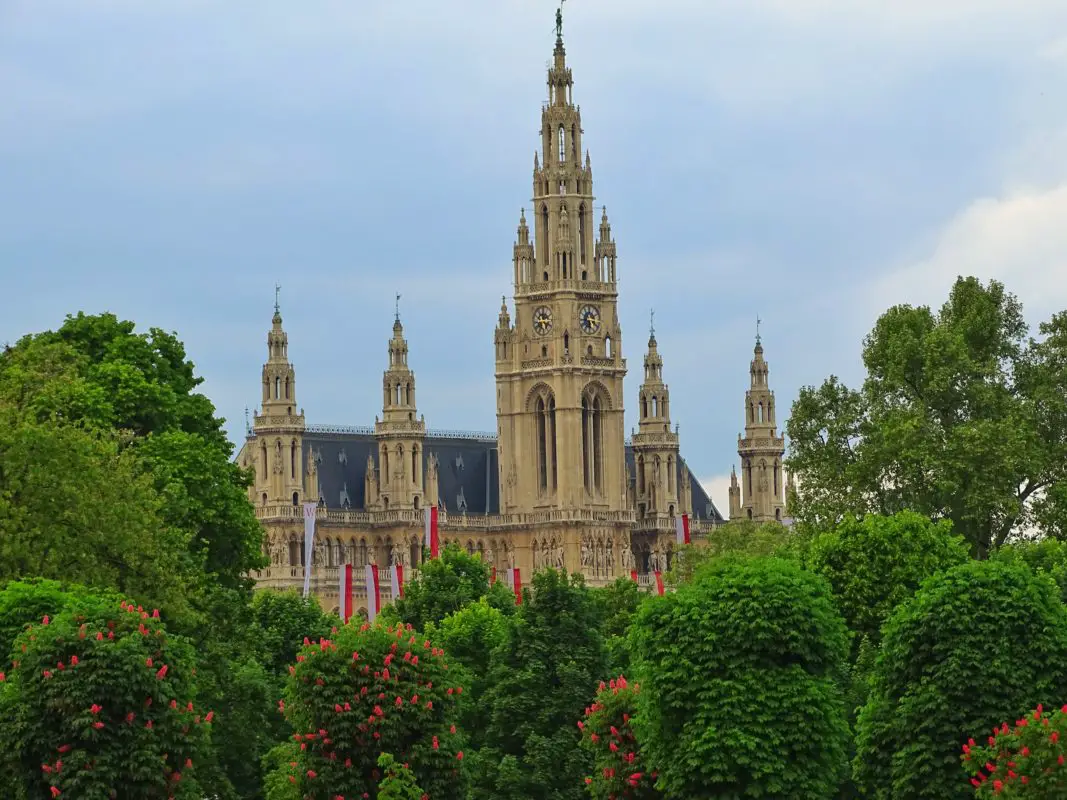
The Vienna City Hall, regionally called “Rathaus”, is one of the most impressive non-religious building in Vienna.
Friedrich Schmidt designed this building in a Neo-Gothic style between 1872 and 1883. Today it is the official seat of the Vienna‘s municipal administration.
Free guided tours in German are available on Monday, Wednesday and Friday. For any other language, audio tours are available.
A square in front of the building called Rathausplatz is a significant venue for many of the Vienna’s yearly event. Most important of all the events is the Christmas Market.
If you are in Vienna in Winter around Christmas, make sure to visit Rathausplatz at night, when it is lit up.
How to reach City Hall: Take U2 and get down at the station Rathaus
OR
Take a 10 minute walk from Maria Theresein Platz to the City Hall.
RECOMMENDED TRAVEL GUIDES TO FEED YOUR WANDERLUST
If you enjoyed reading the above post, you might also enjoy the following.
Salzburg: 2 Day Salzburg Itinerary : Best of Salzburg in 2 Days
Vienna: Top Ten Things to do in Vienna, Austria
Germany: Neuschwanstein Castle : Day trip from Munich
Hamburg: 2 day Hamburg Itinerary – Best things to do in Hamburg, Germany.
Switzerland: Best day trip from Zurich, Switzerland
PIN FOR LATER
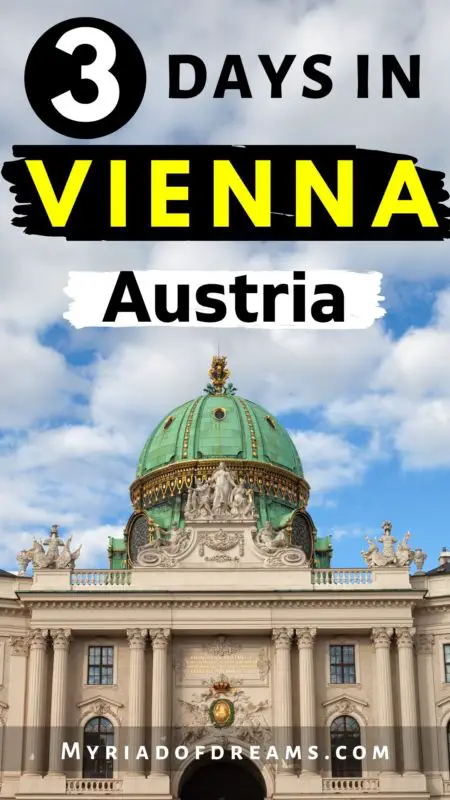

Your blog seems to be like the absolute guide if someone is planning to visit Austria. Very detailed on how to visit places and what’s required. Keep exploring!!
Author
Thank you Nikita. I am so glad you liked it.
Absolutely amazing. fascinated me to a great extent. its is an ultimate guide to travel Vienna with all the useful information and detailed explanation. Keep growing!!